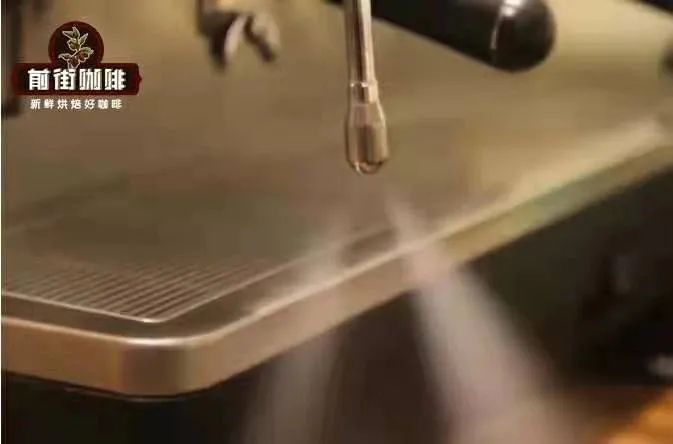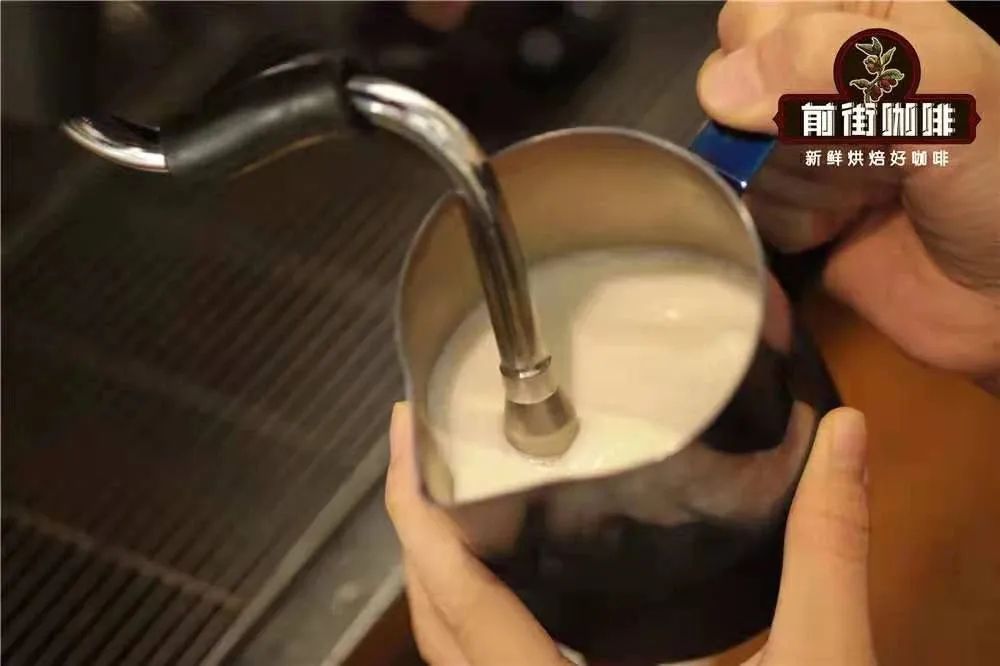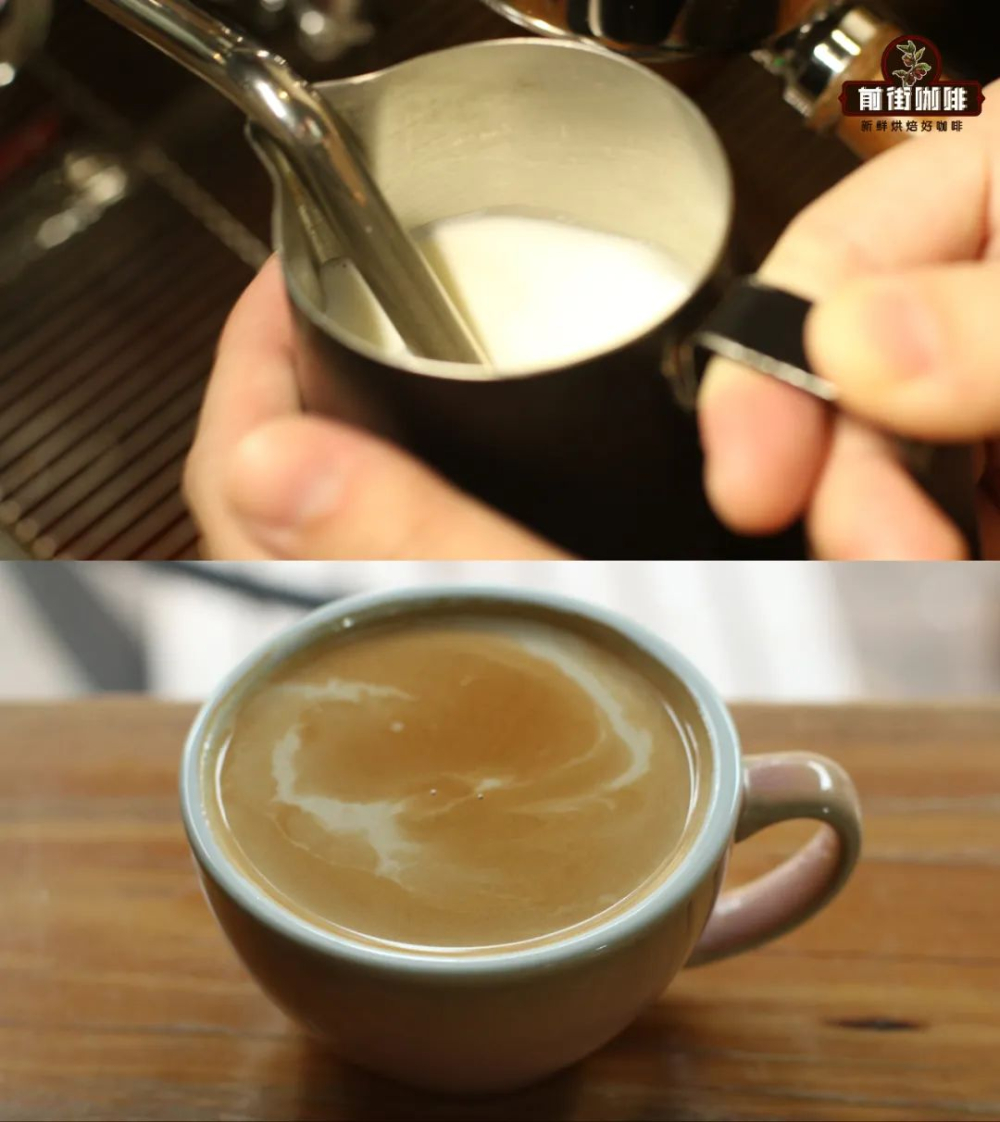How to judge the state of foam by sound?
In fact, to make a good latte, you need delicate, smooth and mobile milk foam. Do you guys usually pay attention to what you will pay attention to when you practice lattes? And usually in the process of practice, will you notice the sound in the process of milking? In fact, the sound that appears in the process of milking can help to judge.
The most common cases of overturning are thinning, thickening, thickening and layering of the foam. So how do we judge by sound in the process of dispelling milk?

First of all, we have to understand the sound in the process of dispelling the milk. The steam bar of the coffee machine will emit high-temperature steam. If all of it is added to the milk, the milk will be heated quickly. When the steam sprinkler is half-buried (half in the milk and half exposed to the air), the air will be pumped into the milk, and the milk protein will wrap the air and form milk foam. When you get to the ideal foam thickness (which can be adjusted according to different types of drinks), lift the milk tank up, bury the steam pipe in the milk, enter the beating state, and beat the foam until the temperature reaches 55-65 degrees.

So we can draw a theory here that the number (thickness) of milk foam depends on how much air is injected, and in this process, it will make a sound similar to the "AIDS" sound of tearing paper. In fact, we can use these "AIDS" sounds as a measure of how much air we enter.

Then through the experiment, the use of a unified milk kettle, milk volume, through the "Zizi" sound to compare the effect of air intake time on milk bubbles.
The nourishing sound is short.
After the beginning of killing, let the liquid surface rotate to reveal the steam head, which will make a "Zizi" sound, but the "Zizi" sound lasts only 0.5 seconds or so before lifting the milk tank and burying the steam stick into the milking state. at this time, it will continue to make a shrill sound until the end of milking. The effect of this kind of dismissal will be thin, almost no degree of milk foam, strong fluidity, no change in liquid level, and it is difficult to pull flowers. The taste can also be too frivolous.

Nourishing sound is long.
After the beginning of milking, the liquid surface is rotated to reveal the steam head. After entering the drying process, the sound of "Zizi" begins to appear, and the "Zizi" sound lasts about 7 to 8 seconds, and then there will be a heavy and thick inhaling sound during the period when the buried steam head enters the beating state, until the end of the milking. This can be clearly seen to send out too many milk bubbles, and milk bubbles will be thick, poor mobility, milk bubbles will be relatively rough. This kind of foam will be more cappuccino. The taste will be thicker and more likely to be delaminated, which is more likely to be cappuccino foam.

In the process of milking, the milk of a latte needs to find the right angle and position between the steaming stick and the milk pot, and after opening it, let the liquid surface rotate, revealing half of the steam sprinkler. Let the air into the milk foam appear "AIDS" sound about 2 seconds after the need to bury the steam head (it is not recommended to bury too deep and too close to the vat wall), enter the beating state, at this time will make a steady and subtle inhale sound Until the temperature is between 55 and 65 ℃. Out of the milk will be more delicate, smooth, fluidity of milk foam, suitable for flower pull, milk foam taste moderate.

To sum up, the longer the "Zi" sound, the thicker the foam, the shorter the time, the less the air, the thinner the foam, and when there is no air intake, there will be a continuous shrill sound.

Left: thin foam right: thick foam
So, we first need to find the right angle between the steaming stick and the milk tank, and then we can determine whether there is air intake by whether there is a continuous shrill sound, and then determine the thickness of the foam by the length of the "Zi" sound. So in the usual practice, you can pay more attention to these sounds, these sounds are very helpful to whether to send a good milk foam, of course, the most important thing is to practice more.
-END-
Front Street Cafe
No. 10 Baoqian street, Yandun road, Dongshankou, Yuexiu district, Guangzhou, Guangdong province

Important Notice :
前街咖啡 FrontStreet Coffee has moved to new addredd:
FrontStreet Coffee Address: 315,Donghua East Road,GuangZhou
Tel:020 38364473
- Prev

How does the latte pull out the unicorn pattern? Come to get for a little trick to improve the flower pull!
Usually, friends who make their own milk coffee at home will have the idea that they want to master the difficult pattern of flower drawing. However, it will be bound by a coffee machine with weak steam, and the milk foam is relatively thick / rough, so that it is easy to atomize during flower drawing, or the foam hardens and does not move the flowers.
- Next

What is the meaning of lactic acid fermentation with coffee bean treatment?
In daily life, many delicious foods are produced by lactic acid fermentation, such as pickled pickles, yogurt, cheese and so on. In the process of raw bean processing of coffee, the required lactic acid bacteria will also be introduced in the fermentation process.
Related
- What is the meaning of lactic acid fermentation with coffee bean treatment?
- How to judge the state of foam by sound?
- How does the latte pull out the unicorn pattern? Come to get for a little trick to improve the flower pull!
- Will flower pulling affect the taste of the latte?
- Do you know the history of coffee?
- The difference between honey treatment and sun washing what is raisin honey treatment?
- What kind of milk can a novice use to make coffee foam to keep the foam longer? The correct method and skills of milking tutorial sharing
- Why do washed coffee beans taste sour? Flavor characteristics of washed Coffee
- Introduction to the skill of how to practice the size and height of water injection around the circle of hand-brewed coffee
- How do beginners practice coffee flower drawing from scratch?

